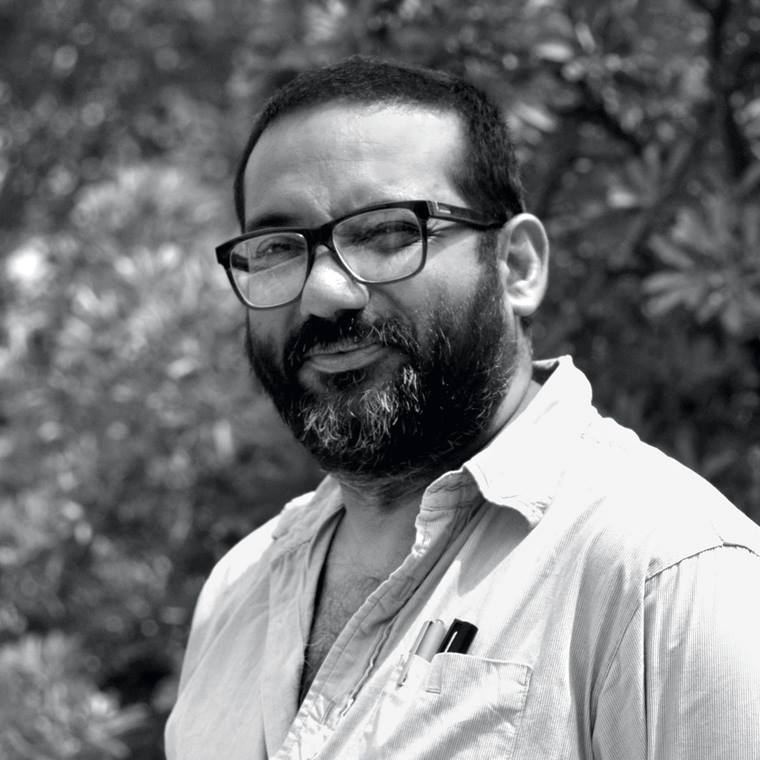Maqbool Fida Husain popularly known as M.F. Husain was an Indian artist of modified cubist style. He is known for his bold and vibrant color applications. Born on September 17, 1935, in Pandharpur town of Maharashtra in a Sulaymani Bohra family. He lost his mother at age of 18 months soon after that his father remarried and moved to Indore. He completed his schooling in Indore and in his teenage he studied the art of calligraphy in Baroda. Soon after that, he realized his zeal for art and he decided to become an artist which leads him to study at Sir J.J. School of Art.

He started his painting career as a painter of cinema hoardings. By the early 1930s Hindi cinema was flourishing and almost 200 films release per year, he used this opportunity to earn his daily income. He also worked for a toy company where he designs and made some innovative toys. Whenever he could afford to travel, he traveled to Gujarat to paint landscapes.
Early Professional career
Husain and his friends for Sir J.J. School of Art wanted to break the old tradition and create something new for the newly free India which leads to the formation of the Progressive Artists’ Group. This group helps the artists to create more modern artworks. Soon after its creation, PAG got a huge response from the western and Asian art world which leads to the popularity of the PAG members. The group became a turning point for the history of Indian Art.
In 1952, Zurich displayed his first solo exhibition. It was a runaway hit and his second art exhibition was in India House in New York City in 1964. In 1966, he was awarded Padma Shri by the Government of India.
Later Career and Controversy
He was specially invited with Pablo Picasso at Sao Paulo Biennial in 1971. In 1986, he was elected as the member of the Rajya Sabha. He enjoyed initial success with fame in the art world. Even though he was enjoying both fame and success but he was also accumulating a lot of controversy for his paintings because of his artworks depicting Hindu gods and goddess nudes. In 1996, a Hindi monthly magazine “Vichar Mimansa” published some of his controversial paintings that were created in the 70s. These paintings that depicted nude Hindu goddesses earned the wrath of many Hindus and Hindu organizations lead to the eight criminal complaints were lodged against him. Two years later his house was attacked and many of his paintings were vandalized.
In the year 2006, he was charged again for hurting the sentiments of people for coming up with a nude portrait of Bharatmata. The painting was forced to withdraw from various auction houses and an apology from Husain was demanded. Later on, the painting was sold for Rs 80 lakh. In the meantime, he was started getting death threats from various powerful organizations and he was left with no other choice other than to leave India.
In 2008, one of his paintings fetched $1.6 million at Christie’s. It made him the best-paid painter in India at that time. After that, a single canvas of Husain fetched over 2 million dollars at Christie’s auction. When he was in Qatar, he was commissioned by the Sheikha Mozah Bint Nasser Al Missned where she asked him to paint two paintings on the history of Arab civilization and the history of Indian civilization.
In 2008, he was commissioned to paint 32 paintings depicting the history of India. He could only complete eight of them before he died.
Husain and movies
In 1967, he debuted as the filmmaking and came with “Through the Eyes of a Painter”. It was premiered at the Berlin International Film Festival and won the Golden Bear short film award. He was an admirer of actress Madhuri Dixit and even considered her as his muse. In 1997, he made a cameo in a movie named “Mohabbat”- the film was having Madhuri as a lead. Madhuri played an artist in the film and the artworks displayed throughout the flick were contributed by Husain himself.
It was the year 2000 when he made a film titled ‘Gaja Gamini’, it had Madhuri in the lead. It was a movie about womanhood and was intended to pay tribute to Madhuri Dixit. In 2004, he made a film titled “Meenaxi: A Tale of Three Cities”, which was actress Tabu in the lead. This film faced several controversies because some Muslim organizations claimed that one of the songs featured in the movie was blasphemous. The film was pulled out from the cinemas but it was a critical success.
The Government of India appointed Husain as a member of the Rajya Sabha for his contribution to art. The Jordanian Royal Islamic Strategic Studies Centre released a list of 500 most influential Muslims in the world Husain was a part of it.
His paintings have been sold in many European and North American countries.
While spending his exile in London and Qatar he expressed his interest a strong desire to return to India, he was advised against it as he was constantly receiving death threats. On 9th June 2011, he breathed his last after a cardiac arrest in Royal Brompton Hospital in London.

Vikash Kalra is a self-taught artist & writer based in New Delhi whose work has been exhibited across India and is held in several private and corporate collections.
https://www.vikashkalra.com/web/

Leave a Reply